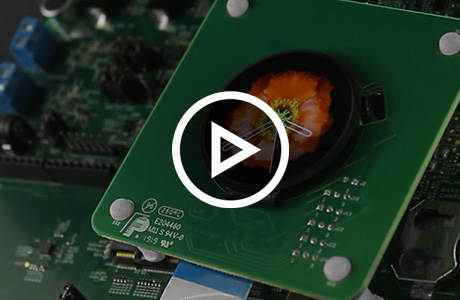Picture yourself as an embedded developer, challenged with the task of building a GUI for an embedded systems, for example a sportwatch that needs to display a wealth of information, from health and fitness stats to text messages and social media updates. But how can you create a user-friendly interface that’s both responsive and power-efficient, given the device’s limited resources and processing power?
Choosing a GUI solution for embedded systems based solely on cost and features is a common misstep. It’s crucial to consider long-term factors that impact your product success and future developments.
But what to look for in a GUI solution for embedded systems? What insights and nuances should a business look out for when crafting a new graphical user interface for a smartwatch, an industrial device, a home appliance, or a boat’s main navigation system?
Key Considerations When Choosing a GUI Solution for Embedded Systems
The design and implementation of a GUI for embedded systems involves many tradeoffs that can greatly impact the success of the product. To make informed choices and ensure the long-term success of the product, it’s important to carefully consider the following key factors when selecting a GUI solution for embedded systems:
- Memory and Power Efficiency
Designing a GUI for constrained embedded systems such as wearables requires a focus on optimizing memory and power usage to minimize hardware requirements. Ensuring that the GUI has a small memory footprint is crucial for maintaining stability and performance on these devices. Additionally, power optimization is essential for delivering a fast, responsive, and stable GUI experience, even with limited processing power. By focusing on both memory and power efficiency, designers can create GUIs that are both visually appealing and highly functional, even on the most compact and cost-efficient microprocessor.
- Fonts and Vector Support
For an optimal embedded GUI user experience on embedded systems, it is important to have support for extensive font types, the choice between vector or raster graphics, and hardware acceleration support. Extensive font support enhances readability, while vector or raster graphics impact scalability and detail. Hardware acceleration support improves performance and responsiveness for seamless animations and interactions. By incorporating these features, developers can create efficient and customizable interfaces that look great and provide a smooth user experience.
- Design Flexibility
One of the biggest challenge in embedded GUI development is managing changes in design, which are common and inevitable in nearly all projects. The best way to avoid delays and budget overruns is to adopt a flexible and agile approach when designing and developing a GUI for embedded systems. This involves using modern development methods such as continuous integration and continuous delivery (CI/CD), which allow for rapid and frequent iteration, as well as automated testing to ensure that changes and improvements are introduced with minimal impact on the overall project timeline.
- Hardware and Middleware Integration
Another key challenge when developing a GUI for embedded systems is seamless host-to-target integration. When evaluating solutions, you need to ensure that your GUI will be compatible with your device’s hardware to ensure a smooth integration. Additionally, your UI is just one component of the product that certainly also communicates, controls some process, interfaces with the cloud. You need an embedded GUI solution that integrates nicely with the rest of the application and middleware.
- Portability across different devices
The field of IoT is extremely heterogeneous: devices are always being improved or replaced, and there’s certainly no curbing the rising tide of new additions. This leads to the prevalence of a more complex and less standardized design practice. This is where portability is a key factor to able to reuse GUI assets across a wide range of embedded systems to unify branding, and keep a consistent UI/UX across product lines for products consumer love and recognize.
- Maintainability and ability to upgrade
For long-term success of an embedded product, maintaining and updating the GUI to adapt to changing market needs is crucial. This involves using modular components, writing adaptable code, and following best coding and testing practices. Over-the-air updates should also be implemented to quickly add or update applications without the need for product recalls, which can be very expensive.
Solve your GUI Development Challenges With an Optimized Framework
While some GUI solutions, such as Qt, offer robust capabilities for complex projects, they can come at the cost of high memory and power consumption due to running on Linux environments. On the other hand, lighter solutions may be more cost-effective for smaller projects, but may lack the ability to scale and support long-term profitability.
MicroEJ’s GUI solution is designed to address the unique requirements of embedded systems, offering both high-performance and low-power capabilities for all types of microcontrollers. With its optimized and lightweight architecture, MicroEJ enables developers to create rich, fast, and responsive embedded GUIs that can provide an immersive user experience. Additionally, MicroEJ’s solution is highly flexible and customizable and allows for seamless integration with other embedded systems components, making it an ideal choice for developers looking to create high-quality embedded applications.
With its container-based development environment, MicroEJ’s GUI solution is highly portable on a wide variety of hardware components and enable over-the-air updates for continuous integrations and improved user experience.
Choosing the Perfect GUI Solution for Your Embedded System: Your Guide to Success
Selecting the perfect GUI solution for your embedded system can make all the difference between your project being a hit or a miss. Here are some things to keep in mind: First and foremost, think about your system’s hardware and middleware requirements to ensure compatibility with the solution. Then, dig into the solution’s features, like how easy it is to develop with, its customization options, scalability, performance, and low-power optimizations. Don’t forget to consider long-term maintenance, portability, and overall value. With these considerations in mind, you’ll be on your way to choosing a GUI solution that provides an engaging and seamless user experience while meeting your specific project needs.



